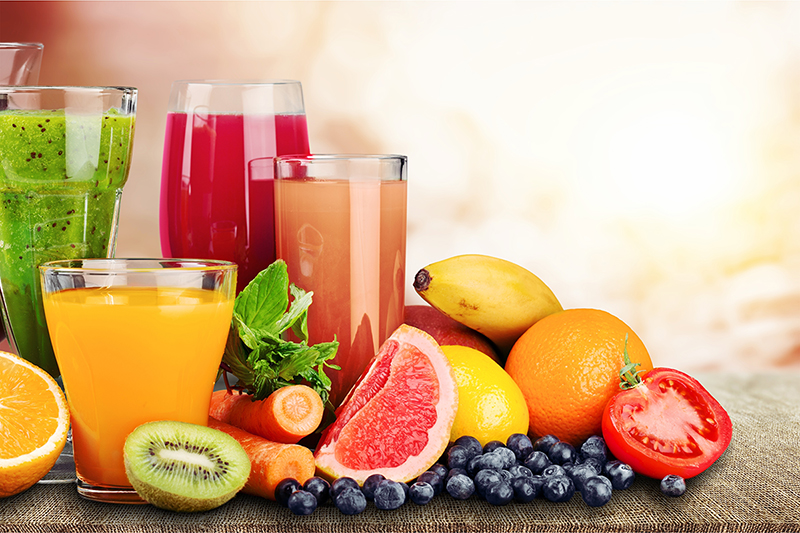Which is healthier and provides more benefits?

Getting enough fruit in your diet can be difficult. It is recommended that on a daily basis, you get four fruit servings, which is equivalent to consuming either one medium-sized fruit; a half a cup of fresh, frozen, or canned fruit; a fourth a cup of dried fruit; or a fourth a cup of fruit juice.
It may seem easier to reach for your favorite fruit juice instead of a whole fruit, especially if you are busy or just prefer juice. But is one fruit option healthier for you than the other?
Benefits of fruit
Fruits are an essential part of a healthy diet. They can promote weight loss while curbing your sweet tooth. Fruits are also high in fiber and other key nutrients that helps the body function, help lower the risk of heart disease, inflammation, diabetes, while also aiding the digestive system.
Truth about fruit juice
Both whole fruits and 100% natural fruit juice contain natural sugar. For example, raspberries have 5.4g of sugar per cup, while grapes have 23.4g per cup.
However, some fruit juices include added sugars, which offer little to no nutritional value. The American Heart Association recommends women consume 100 calories or less of added sugars and men 150 calories or less per day.
So, before reaching for a glass of juice, think about the added sugar contents. Here is a list of popular juices and their sugar amounts:
- Orange juice: 22g
- Grape juice: 36g
- Cranberry juice: 28g
- Apple juice: 28g
- Lemonade: 27g
- Watermelon: 12g
- Tomato: 6g
- Pomegranate: 32g
- Grapefruit: 17g
- Prune: 25g
- Tart cherry: 25g
- Pineapple: 30g
A risk of drinking juice is that it’s easy to consume too much sugar from many fruits in liquid form than eating it. For example, it would take you quite a bit of time to eat through five apples but drinking the same amount could take less than a minute.
Consuming too much sugar has been linked to tooth decay and liver damage. It may also lead to decreased energy, bloating, insomnia, and weight gain.
Related:5 Ways to Cut Back on Added Sugars
Additionally, to put into perspective, many sugary drinks like sodas have the similar sugar amounts as in some fruit juices—about 20 to 26g of sugar per cup. While you may opt for a fresh glass of juice, keep in mind that the sugar amounts are comparable to a soda.
Importance of fiber
Most Americans don’t get enough fiber even though it is an important component of a healthy diet. Women should get 25g of fiber daily, and men should get about 38g per day.
There are two types of fiber: insoluble and soluble. Soluble fiber is found in many fruits like apples, berries, and citrus fruits. Fiber is linked to lower risks of high blood pressure, constipation, and heart disease.
One of the healthiest parts of fruit is the fiber it provides and that is found in the skin. Many juicers pull out some of the fruit’s fiber content and its many nutrients because the skin is often discarded in juicing.
Drinking your calories
Smoothies are an easy way to getting your daily dose of fruits (and vegetables) for those who hate eating fruit and drinking fruit juice. While smoothies can be a convenient option, it is important to use the whole fruit to preserve the nutrients such as fiber and by wary of mixing in added sugars.
So, which should you reach for? A fresh whole fruit or a glass of fruit juice? The bottom line is that whole fruits are better overall, but they aren’t your only option. Just be cautious of the added sugars in what you’re drinking and don’t skimp on the fiber.
Thanks to: https://selecthealth.org/blog/2021/05/eating-fruit-or-drinking-fruit-juice
